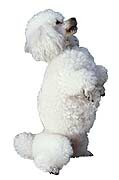
WEDNESDAY, Aug. 11 (HealthDay News) — In what is described as the most comprehensive genetic analysis of dogs to date, researchers have found that a mere handful of genetic regions account for the majority of differences in physical traits among canine breeds.
The observation is drawn from the genetic mapping of 915 dogs, conducted to determine the inherited source of about 57 specific physical traits that distinguish one breed from another. The effort could eventually lead to fresh insight into the genetic underpinnings of basic human traits such as height, weight and hair color.
“Understanding the genetic bases of complex traits in humans is difficult because many different genes can influence a particular trait. Having model systems, such as mice and dogs, is critical for making sense of the biology,” co-author Carlos Bustamante, a professor of genetics at Stanford University in California, explained in a university news release. “Dogs are a fantastic model system since they complement mouse and human genetics.”
The analysis revealed that “only six or seven locations in the dog genome are necessary to explain about 80 percent of the differences in height and weight among dog breeds,” he said. “In humans these are controlled by hundreds, if not thousands, of variants.”
The researchers added that identifying the dozen regions where dogs carry genetic switches among breeds may point scientists to where they can find mutations crucial to human health and disease.
Bustamante and colleagues from Stanford University School of Medicine, Cornell University and the National Human Genome Research Institute reported the findings online Aug. 10 in the Public Library of Science — Biology.
The authors noted that because of relatively recent human efforts to engineer new canine breeds, dogs have now become the most physically diverse land animal.
The research team’s genetic analysis involved representatives of 80 domestic dog breeds and 83 wild canids, including wolves, foxes and coyotes. Ten domesticated Egyptian village dogs were also included.
Hoping to use canine gene mapping to shed more light on mammalian behavior, Bustamante and his colleagues say they next plan to map the genetic sources of canine behavioral traits.
More information
For more on the dog genome, visit the U.S. National Center for Biotechnology Information.

